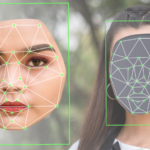A new dataset of Iwi and hapū names that will form the basis of hapū data sovereignty for database administrators allowing hapū to regain sovereignty over their own data in this new society where data is the new currency.
Referencing
This document may be referenced as:
Karaitiana Taiuru (2021). Explanation and notes of the Hapū Data Sovereignty Dataset. https://www.taiuru.co.nz/hapu-data-sovereignty/
The Data Set this paper refers that is accessible from https://github.com/ktaiuru/Hap-Data-Sovereignty-Dataset-2.0-.- may be referenced as:
Karaitiana Taiuru (2021). Hapū Data Sovereignty Dataset (2.0). https://github.com/ktaiuru/Hap-Data-Sovereignty-Dataset-2.0-.-
Download the Hapū Data set
The Data Set this paper refers that is accessible from https://github.com/ktaiuru/Hap-Data-Sovereignty-Dataset-2.0-.-
Hapū Kaitiakitanga Licence
The following licence was originally written by Te Hiku Media and has been modified by Karaitiana Taiuru to allow for and recognise Hapū Sovereignty over their own data in the Hapū Data set.
Preamble
Kaitiaki is a Māori word without specific English translation, but its meanings are similar to the words guardian, protector, and custodian. In this context we protect the hapū and Iwi names in this repository and will provide access to the data set as we deem fit through our tikanga (Māori customs and protocols).
While we recognise the importance of open source technology, we’re mindful that the majority of tangata whenua and other Indigenous Peoples may not have access to the resources that enable them to benefit from open source technologies. As tangata whenua, our ability to grow, develop, and innovate has been stymied through colonisation. We must protect our ability to grow as tangata whenua. By simply open sourcing our data and knowledge, we further allow ourselves to be colonised digitally in the modern world.
The Hapū Kaitiakitanga Licence is a work in progress. It’s a living licence. It will evolve as hapū see fit. This is a licence that is an international example for Indigenous People’s retention of mana over data and their other intellectual property rights in a Western construct.
Kaitiakitanga of Content
The kaitiakitanga of all data in the Hapū Data Set remains with the respective hapū. This data set may be freely used and distributed with the licence attached, but may not be sold or used for commercial purposes.
Introduction
This article introduces a new dataset of Iwi and hapū names that will form the basis of hapū data sovereignty for database administrators that recognises hapū and Iwi rights and valuable information to navigate the whole Māori Data Sovereignty landscape. This data set is a work in progress that currently contains over 2100 hapū names from 54 Iwi.
The data set is creative commons and is available from https://github.com/ktaiuru/Hap-Data-Sovereignty-Dataset-2.0-.-
Increasingly the New Zealand government/The Crown are ignoring Māori data sovereignty partners, especially hapū by choosing to work only with Iwi via the Iwi Leaders Forum under the auspices of the Mana Ōrite agreement. The Mana Ōrite agreement is a significant move forward in regards to Māori Data Sovereignty, but it does not consider that sovereignty given to hapū by Te Tiriti/The Treaty of Waitangi. More discussion in another post I wrote Māori Data Sovereignty Consultation Obligations.
This list was compiled as a resource tool to assist hapū gain sovereignty over their own data as opposed to the ever increasingly iwi data sovereignty rights recognised by The Crown. This list can be added to data sets as a sub set of Iwi names.
The obvious information that is missing is around marae data sovereignty. There are other online tools that can be utilised for this and that will be discussed with the various data owners in the future.
Hapū Data Sovereignty
Hapū Data Sovereignty is a sub set of Māori Data Sovereignty and refers to the inherent rights and interests of hapū (individual or collectively) in relation to the creation, collection, access, analysis, interpretation, management, dissemination, re-use and control of data relating to hapū as inherited by whakapapa with mana atua, mana tangata and or reflected in He Whakaputanga and or Te Tiriti and the provided recognition of rights with the United Declaration of Rights of Indigenous Peoples.
For further information and explanations about Māori Data Sovereignty, Hapū Data Sovereignty, Marae Data Sovereignty and Whānau Data Sovereignty see “Māori Data Sovereignty an Updated Definition” https://www.taiuru.co.nz/maori-data-sovereignty-an-updated-definition/
Methodology
Five sources of truth were used to compile the Hapū Data Sovereignty list.
- StatsNZ 2018 Census list of Iwi names
- Waitangi Tribunal Reports
- Iwi web sites and publications
- Iwi Hapū Names List from National Library
- Te Kāhui Māngai
- MaoriMaps.com
1. StatsNZ
The primary source of Iwi names was sourced from the StatNZ Census 2018 Iwi names list. The StatsNZ primary numbering system has been duplicated for iwi so that any cross referencing to the StatsNZ list and future updates that reflect StatsNZ changes can seamlessly occur.
2. Waitangi Tribunal Reports
Many Iwi who have settled or are engaging with treaty negotiations identify who they are by means of geographical, ancestral and hapū connections. Therefore, the Waitangi Tribunal Reports were used as a primary source of truth for hapū names.
3. Iwi web sites
Where possible, hapū names were cross referenced with authenticated Iwi web sites that use the moderated iwi.nz domain name and publications. In several instances such as Tūhoe, their web site state up to 65 hapū but their own web site and tribunal reports showed less.
4. Te Kāhui Māngai
Te Kāhui Māngai created by Te Puni Kōkiri is a large dataset of marae, iwi, hapū and other relevant information that is based on information that has been recognised by the New Zealand Government as opposed to traditional Iwi, such as:
- Mandated Iwi Organisations and Recognised Iwi Organisations in the Māori Fisheries Act 2004; and
- Mandated bodies recognised for Treaty of Waitangi settlement purposes, including Treaty negotiations and post-settlement governance entities;
- Iwi authorities and Groups that represent hapū for the purposes of the Resource Management Act 1991;
- National and Urban Māori organisations that have statutory associations with representative iwi organisations (“Other Organisations”); and
- Urban and Institutional Marae.
The issue with only relying on such lists is that traditional iwi and hapū structures become ignored and not consulted in favor of those Iwi and hapū that choose to adapt their traditional and long-established kinship groups into western structures. The biggest risk with this as seen in America with the federally recognised tribes versus tribes that are not recognised tribes by the government. More than 200 tribes do not have federal recognition, affecting tens of thousands of tribal members in America alone. The U.S. government officially recognizes 574 tribes. Those unrecognised tribes get no financial assistance or even Covid 19 assistance while their recognised tribes did.
Hence Te Kāhui Māngai was used as a secondary source and for new mandated iwi information.
5. Iwi Hapū Names List from National Library
The National Library have their own iwi and hapū names list. The National Library state “… derived from the waka, iwi, and hapū names which had been used to describe collections in the Alexander Turnbull Library, and has been reviewed by Te Taura Whiri, the Māori Language Commission. The names listed are not a dictionary, and shouldn’t be seen as authoritative beyond their use in libraries and archives”.
This resource was important as it contains lists of hapū that are or were recognised by whānau, hapū and Iwi at some point.
6. MaoriMaps.com
This web site was used to identify when possible, if a name was an Iwi or hapū and the geographic location.
Notes
- Iwi names are listed by the geographic regions based on StatsNZ data.
- Hapū are listed alphabetically.
- Te Arawa has been added as a traditional Iwi whereas the Census list has divided Te Arawa by hapū and called them iwi and Iwi authorities.
- 2018 Census list of Iwi that are not in this list:
- Ngā Pōtiki ā Tamapahore Trust is a leading tribal organisation that serves the people of Ngā Pōtiki.
- Ngāti Rongomai is recognised in Te Arawa as a Te Arawa iwi according to Te Puni Kōkiri
- Te Hika o Pāpāuma is an Iwi authority that according to Te Puni Kōkiri
- Ngāti Kearoa / Ngāti Tuarā are listed as an Iwi and as a Hapū according to Te Puni Kōkiri
- Rereahu was removed from the list as it is Trust Maraeroa A & B (Land Block). All individuals who descend from the owners of the Maraeroa A and B Blocks, identified by the Native Land Court in 1886 and 1891. The descendants are of Ngāti Rereahu, Ngāti Maniapoto, Ngāti Kārewa, Ngāti Matakore, Ngāti Tūwharetoa and other neighbouring iwi.
- Ngāti Rākaipaaka see Kahungunu
- Te Hika o Pāpāuma is a marae that is now a registered Iwi authority
- Te Paatu a hapū of Ngāti Kahu
- Uenuku (Ruapehu, Waimarino) is a hapū of Te Āti Haunui-a-Pāpārangi.
- Te Kawerau a Maki are the tangata whenua (people of the land) of Waitakere City, who hold customary authority or manawhenua within the city. Te Kawerau a Maki descend from the earliest inhabitants of the area. However, the Kawerau a Maki people have been a distinct tribal entity since the early 1600s, when their ancestor Maki and his people conquered and settled the district. http://www.tekawerau.iwi.nz/history
- Ngāti Whātua o Kaipara is the name that was agreed upon by the majority of hapū and whānau of the five marae of south Kaipara (Reweti, Haranui, Kākānui, Araparera and Puatahi) during the claim and settlement process. This is the primary area of interest that Ngā Maunga Whakahii o Kaipara works within. The term Ngāti Whātua o Kaipara is not traditional and was adopted during the claim period to avoid confusion between Ngāti Whātua in Orakei, Ngāti Whātua from Te Uri o Hau and Ngāti Whātua in south Kaipara. Within the context of the Claims Settlement Act 2013, Ngāti Whātua o Kaipara means not only Ngāti Whātua but also Ngāti Whātua Tūturu, Te Tao Ū, Ngāti Rango (sometimes referred to as Ngāti Rongo), Ngāti Hine and Te Uri o Hau who exercised customary rights predominantly within the Ngāti Whātua o Kaipara area of interest shown above. https://www.kaiparamoana.com/our-rohe The name Ngāti Whātua o Kaipara is not traditional but has been adopted to avoid confusion between Ngāti Whātua in Ōrākei and Ngāti Whātua in south Kaipara.
- Ngāi Tai ki Tāmaki (Ngāi Tai) are the original inhabitants and Iwi of Tāmaki Makaurau. The Iwi is based in Maraetai, Te Waitematā and Tikapa Moana, and exercises mana whenua and mana moana interests across Auckland and the Hauraki Gulf. Our main marae is Umupuia at Maraetai, and we have various marae connections across Mātaitai, Whataapaka and beyond. The Iwi has whakapapa and other relationships with Iwi in the Tāmaki Makaurau and Hauraki regions https://www.ngaitaitamaki.iwi.nz/#OurStory
- Ngāti Tumutumu is a Māori iwi of New Zealand, named after the eponymous ancestor Te Ruinga, son of Tumutumu. They live at Te Aroha in the Hauraki District.
- Ngāti Tara Tokanui signifies the compact which was formed through the intermarriage between Te Awapu of Ngāti Tara and Te Rae of Ngāti Hako. The iwi Ngāti Tara also whakapapa to Marama (Ngamarama) through, firstly, her marriage to Hoturoa and, secondly, through Tarawa of Ngāti Hako and Ngamarama https://ngatitaratokanui.maori.nz/
- Ngāi Tahu have the 18 Papatipu R1unanga at the start of the list followed by an optional historical list of Ngāi Tahu hapū that are no longer formally recognised.
Glossary
Hapū
Pre-colonisation and still in many areas of New Zealand, a hapū is/was a significant political unit consisting of a number of whānau existed as independent colonies spread over a wide area and interspersed with groups from other iwi.
Iwi
A collective of a number of whānau and hapū that trace their ancestry to a common ancestor. An Iwi usually is comprised of two or more hapū, although a number of smaller iwi have marae but no hapū.
Electoral Iwi Organisation and Other Māori Organisation
For the purposes of sections 111A to 111F of the Electoral Act 1993, iwi organisation and other Māori organisation means any organisation listed in the Schedule.
Iwi Authority/Other Iwi Authority
The term “iwi authority” is defined in the RMA only for the purposes of that Act. An iwi authority is not, therefore, necessarily the same thing as other representative iwi organisations recognised by the Crown. Consequently, entry as an “Other Iwi Authority” does not in itself specifically imply formal Crown recognition of that group as an iwi, nor formal Crown recognition of that “iwi authority” to act on behalf of that group.
Iwi Aquaculture Organisation (IAO
Iwi Aquaculture Organisation under the Māori Commercial Aquaculture Claims Settlement Act 2004 an iwi aquaculture organisation is also a mandated iwi organisation under the Māori Fisheries Act 2004, authorised to act on behalf of its iwi in relation to aquaculture claims and aquaculture settlement assets.
Mandated iwi organisation in the Māori Fisheries Act (MIO)
Recognised iwi organisation in the Maori Fisheries Act 2004 when a recognised iwi organisation has met the governance criteria set out in the Māori Fisheries Act it is entitled to receive fisheries assets as the mandated iwi organisation for that iwi. There can be only one mandated iwi organisation per iwi.
Resource Management Act consultation the authority which represents an iwi for the purposes of the Resource Management Act 1991 (RMA) and which is recognised by that iwi as having authority to do so. Note that the term “iwi authority” is defined in the RMA only for the purposes of that Act. This does not in itself specifically imply formal Crown recognition of that group as an iwi, nor formal recognition by the Crown of that “iwi authority” to act on behalf of that iwi.
Post-Treaty settlement governance entity
Post-Treaty settlement governance entity the representative organisation established after a Treaty settlement with the Crown that has the purpose of representing the iwi members and managing any assets resulting from the settlement.
Recognised iwi in the Māori Fisheries Act
Recognised iwi in the Maori Fisheries Act 2004. the Act identified a finite list of iwi for the purposes of allocation of fisheries assets; the list is comprehensive and means that all Māori can affiliate by whakapapa to at least one iwi.
Recognised iwi organisation in the Māori Fisheries Act (RIO)
Recognised iwi organisation in the Maori Fisheries Act 2004. an organisation recognised by Te Ohu Kai Moana Trustee Limited under section 27 as representing a particular iwi but not to receive fisheries assets; each iwi can have only one recognised iwi organisation; see Schedule 4 of the Act for the full list.
Representative Māori Organisation in the Māori Fisheries Act 2004
Representative Maori Organisation in the Maori Fisheries Act 2004 under section 29 of the Māori Fisheries Act 2004 a Representative Māori Organisation is entitled to participate in the procedures to appoint of remove a member or alternate member of Te Kawai Taumata as provided for in Schedule 8, and to appoint a member of any committee of representatives established under section 116.
Representative Organisation
The organisation which holds a mandate to represent the specific kinship groups [hapū and iwi] identified on that web page.
Marae
Tribal Marae
These marae are linked to iwi/hapū/whānau through whakapapa. The web site www.maorimaps.com can be accessed to find information on associated hapū and iwi marae.
Non-Tribal Marae (Urban & Institutional)
These marae are not based on whakapapa. Urban Marae are typically pan-tribal and server the wider community.
Institutional Marae are specifically associated with a local school, polytechnic, university, church, branch of the armed forces, social service provider, or other institution.
Urban marae
Are non-traditional marae, not specifically associated with any particular hapū, although the mana whenua of the hapū / iwi at the marae site is often acknowledged. They often serve as meeting places for the wider community and may commonly also be called Community; Ngā Hau e Whā; Ngā Mātā Waka; or Pan-tribal marae.
Whānau
For the purposes of this document, the term “whānau’ is translated as ‘family’. Whānau is based on a Māori and a tribal world view with a common ancestor and or atua.





Leave a Reply